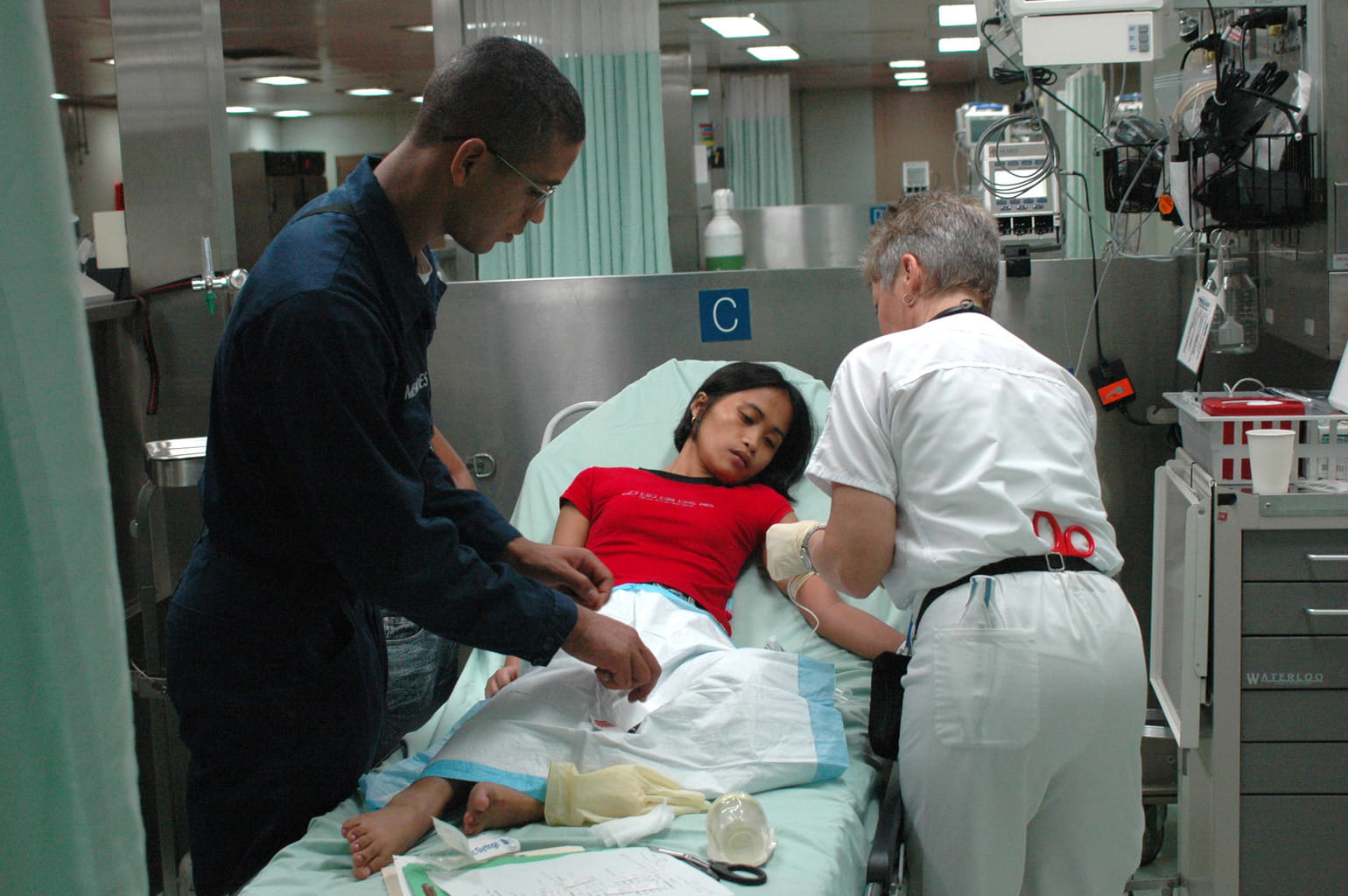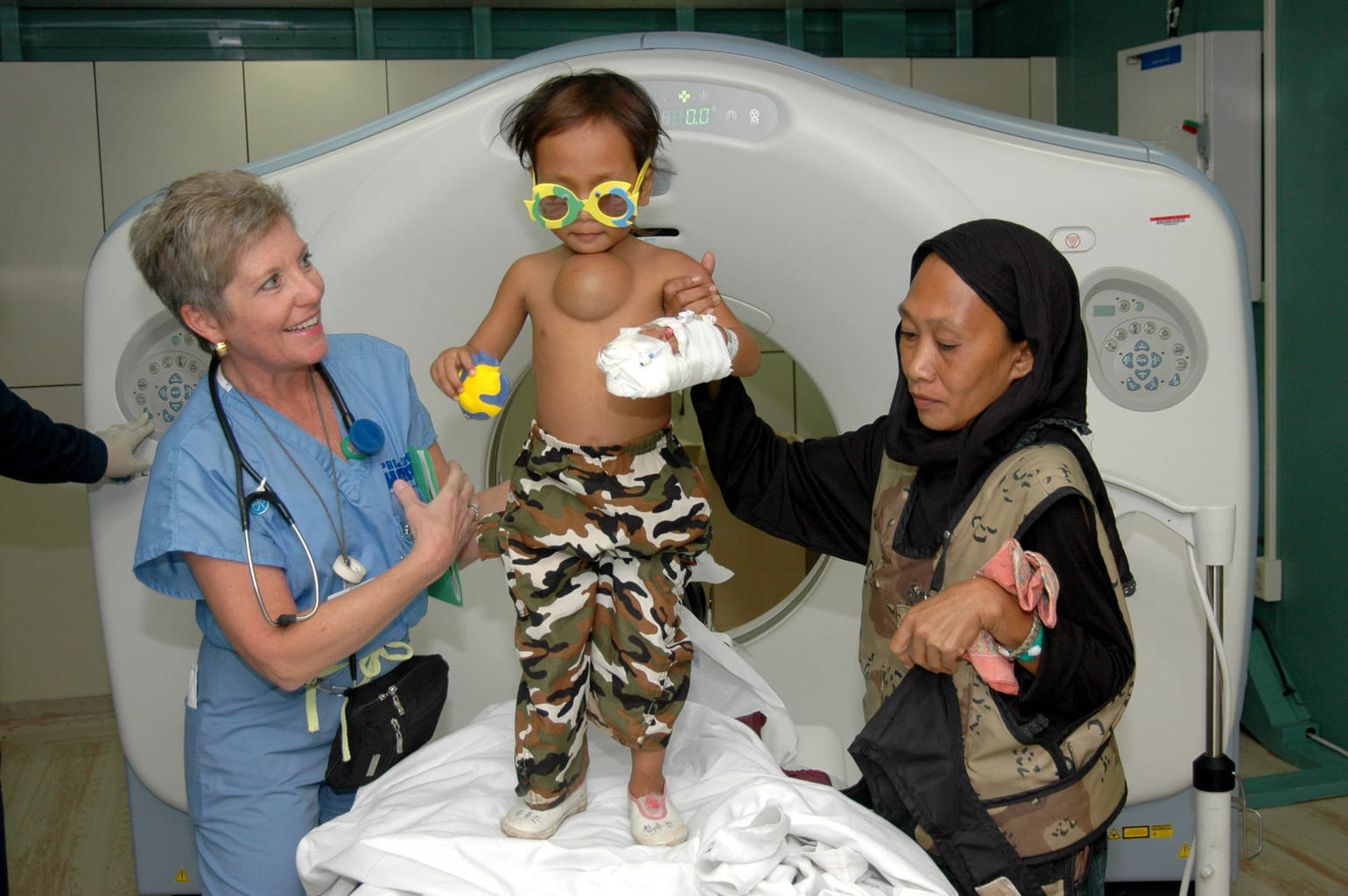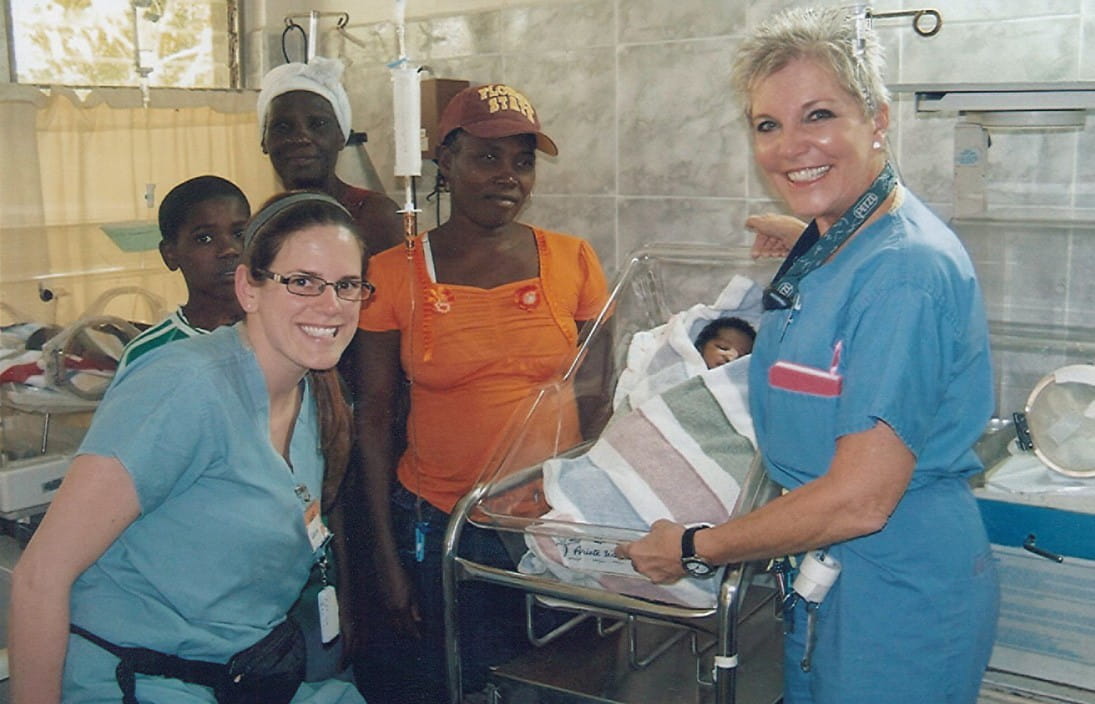Diane Speranza RN, CEN, CPEN first served in her role as a registered nurse in the pediatric department at Stamford Hospital in Stamford, CT where she built an orientation program on pediatrics for the children.
After serving there for 10 years, she transferred to the Emergency Department where in addition to her role as a charge nurse, she volunteered to organize in-service programs for the staff. Later, Diane moved to Florida where she worked at the Tampa General Hospital, Helen Ellis Memorial Hospital, and South Lake Hospital.
Diane is extremely involved in her community by serving at her church and with the homeless and is involved globally with Project HOPE. Project HOPE’s goal is to provide lasting health changes through education and humanitarian assistance around the world.

The majority of the Project HOPE missions Diane served in were in partnership with the US Navy on the USNS Comfort and USNS Mercy but, most recently, she served on a land-based mission in Puerto Rico after Hurricane Maria hit to provide medical care in areas with limited resources and access to services. Diane, originally from New York, now lives in Clermont, FL with her husband of 40 years, Carmine, who is a retired Chief Fire Marshal.
In 2011, Project Hope sent Diane to Haiti for two weeks to help with the cholera outbreak. After landing in Port Au Prince, she and other Project Hope volunteers embarked on a 3-hour road trip in the dark through very rough roads and mountains to their destination, the town of Deschapelles in the Artibonite Valley. They stayed on the campus of the 130-bed Albert Schweitzer Hospital, established in 1956 by members of the Mellon family.
“The house we stayed in had friendly, hard-working med students and physicians from Poland, as well as our cheerful and hardworking HOPE group,” Diane wrote, in a newsletter article for Project Hope. “Gracious local women washed our clothes, scrubbed the house and cooked three good meals a day.”
Diane, a veteran of international medical missions, also wrote, “We became pretty fond of the tea kettle used to warm up our rinse buckets! We sometimes awoke to the sounds of dogs, cats, roosters, donkeys, horses and goats—a veritable menagerie!”
Diane has a way of enjoying every day, and on that trip to Haiti treated fifteen patients at a time with IV fluids (Ringers Lactate) and an antibiotic (erythromycin or doxycycline). As dehydration resolved, they were given an electrolyte solution to drink.
“The usual stay was four days. As with the adult cholera patients, the volume of vomiting and diarrhea was massive. As fast as the fluids would go in they would come out,” Diane recalled.
“We admitted two new patients that first day, a boy 8-years old and a little girl about 3-years old. Both looked close to death. The boy’s eyes were terribly sunken by dehydration. The little girl did not attempt to move at all with the IV stick, and she was so dry her lips were bleeding. They had no strength to cry and were very flaccid. It was just so amazing to see the improvement in both of them after several hours of treatment.”
Diane also worked on this mission in the NICU (neonatal intensive care unit). “I was petrified when they told me I was going to work in the NICU as I am a pediatric nurse; preemies are a whole different world! I soon learned, however, that their NICU is not like the ones in the US. Family member’s stay with the patients 24/7 and give most of the hands-on care. Medical and nursing care is basic; IVs, meds, oxygen, feeding tubes, and formula if the mom had no milk. It took me a few days to accept that death is so often expected in Haiti. I was alone when one little girl died. She was less than 2 lbs.”
Diane attempted CPR, but she knew it was fruitless. “I felt so helpless. I didn’t have a translator, so I comforted the mother without words. I realized that sometimes the best
I could do was to spend time just holding and loving the babies and showing the families that I cared.”
In the beginning of the cholera outbreak Albert Schweitzer staff treated over 130 patient a day, many outside; truly an overwhelming and ongoing mass casualty event.
“Countless lives were saved, as everyone worked heroically,” Diane said. “Imagine this new disaster coming so quickly on the heels of the earthquake! I would start at one end go around to all the patients hanging IV bags, and by the time I was done, I had to start all over again.”
No matter how challenging the circumstances, Diane remains optimistic and grateful. “As always, we are so proud to be part of Project HOPE,” she says, and this May 11, at the UN, Nurses With Global Impact is so proud to honor Diane for decades of service.
She is a stellar example of the brave and compassionate nurses we look up to, admire and respect – a nurse who exemplifies the true meaning of selfless giving.
– Deb


